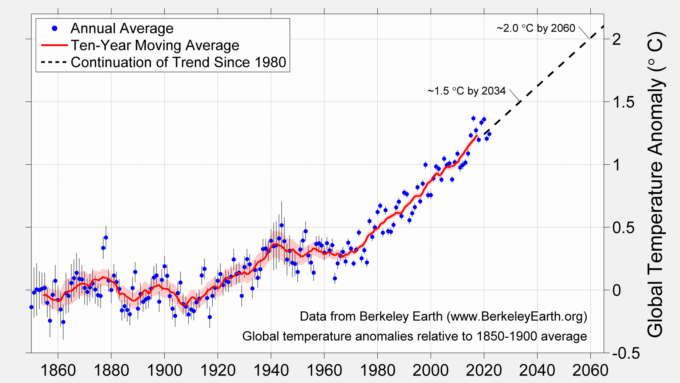Roaming Charges
JEFFREY ST. CLAIR

+ According to Berkeley Earth’s calculations, 2022 was the 5th
warmest year on record, at 1.24 °C (2.24 °F) warmer the 1850-1900
baseline. The year was slightly warmer than 2021, but still cooled by
the persistence of La Niña conditions in the Pacific. Based on the
recent rate of warming, the Earth will reach the 1.5 °C (2.7 °F) warming
threshold around 2034 and 2.0 °C (3.6 °F) around 2060.
+ The eight warmest years on record have now occurred since 2014, the scientists from the European Union’s Copernicus Climate Change Service, reported and 2016 remains the hottest year ever.
+ Even as the La Niña weather event helped to cool the oceans for the third year in a row, global temperatures were still about 0.3C higher in 2022 than the 1991-2020 reference period.
+ The extent of sea ice in the Southern Ocean is about 270,000 square miles less than the previous low, set in 2018.
+ US carbon emissions climbed by 1.3 percent last year.
+ Svalbard is nearly ice-free in January. The temperature in Longyearbyen, the main town, is -1 C now. Salt water freezes at -1.8 C. Once a refuge for polar bears (as any reader of Philip Pullman’s His Dark Materials series knows), Svalbard almost no polar bear habitat this winter. It’s an increasingly dire situation for bears and other sea ice dependent species.


